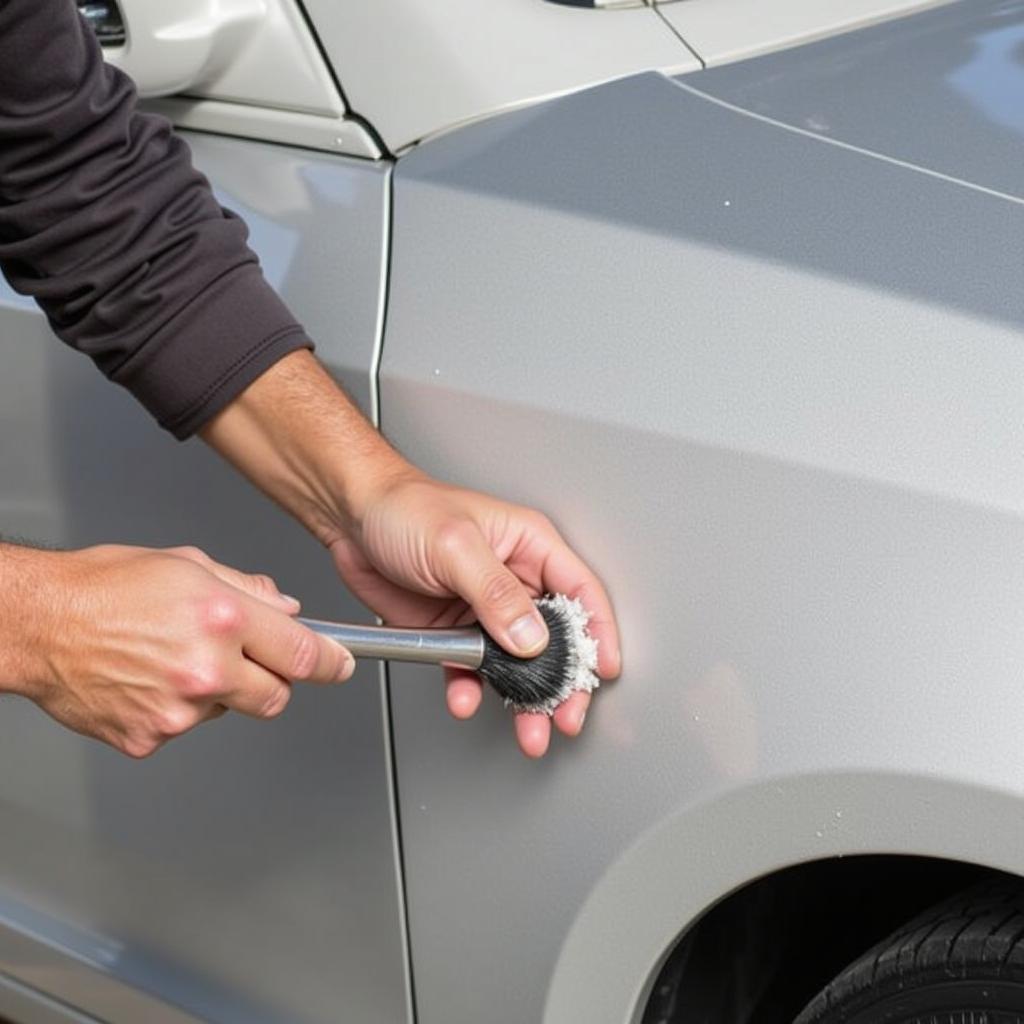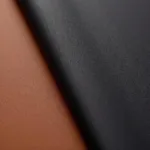Fixing car door paint can seem daunting, but with the right approach and a little patience, you can achieve professional-looking results. Whether you’re dealing with a minor scratch, a paint chip, or more extensive damage, this guide will provide you with a step-by-step approach to how to repair paint on car door effectively.
Assessing the Damage and Gathering Supplies
Before starting the repair, carefully examine the extent of the damage. Is it a shallow scratch, a deep gouge, or a chipped area? This assessment will determine the appropriate repair method and the necessary supplies. For minor scratches, you might only need a rubbing compound and polish. Deeper scratches and chips require touch-up paint, primer, and clear coat. For extensive damage, it might be best to consult a professional. Gather your cleaning supplies, sandpaper (various grits), masking tape, and drop cloths to protect the surrounding area.
Step-by-Step Guide for Car Door Paint Repair
-
Clean the Damaged Area: Thoroughly wash the affected area with car wash soap and water. Remove any dirt, grease, or wax to ensure proper adhesion of the repair materials.
-
Sand the Affected Area (If Necessary): If the scratch or chip is deep, you’ll need to sand the area. Start with a coarser grit sandpaper (e.g., 220-grit) and gradually move to a finer grit (e.g., 2000-grit) to create a smooth surface. Remember to sand lightly and evenly to avoid further damage. car door paint chip repair offers more insights on handling paint chips.
-
Apply Primer (If Necessary): If you’ve sanded down to the bare metal, apply a thin coat of automotive primer to the affected area. This will help the touch-up paint adhere better and prevent rust. Let the primer dry completely according to the manufacturer’s instructions.
 Applying Automotive Primer to Car Door Scratch
Applying Automotive Primer to Car Door Scratch
-
Apply Touch-Up Paint: Using a fine-tipped brush or a touch-up pen, carefully apply the touch-up paint to the damaged area. Apply multiple thin coats, allowing each coat to dry before applying the next. Avoid applying thick coats, which can lead to drips and unevenness.
-
Apply Clear Coat (If Necessary): Once the touch-up paint is dry, apply a thin layer of clear coat to protect the repair and blend it with the surrounding paint.
-
Sand and Polish: After the clear coat has dried, use fine-grit sandpaper (e.g., 2000-grit) to wet sand the repaired area until it’s smooth and level with the surrounding paint. Then, use a rubbing compound and polishing compound to restore the shine. For advice on scratch repair, see who to repair scratches on a car painted door.
Tips from the Experts
John Smith, an automotive paint specialist with over 20 years of experience, emphasizes the importance of patience: “Take your time with each step, especially the sanding and painting process. Rushing can lead to unsatisfactory results.” He also recommends using high-quality paint and materials for the best outcome.
Another expert, Maria Garcia, a certified auto body technician, advises testing the touch-up paint on a hidden area of the car first to ensure a perfect color match. “A slight color difference can be very noticeable,” she explains.
Conclusion
Repairing paint on a car door can be a DIY project if you’re dealing with minor damage. By following the steps outlined in this guide and exercising patience, you can achieve a professional-looking repair and restore your car’s appearance. However, for significant damage, consulting a professional is recommended. For information on costs, approximate cost to repair and paint dent in car door is a useful resource. For issues with the door jam, check out door jam on car paint scratch repair. Remember to always prioritize safety and follow the manufacturer’s instructions for all materials used. You can also check car door edge paint repair for specific advice on repairing paint damage to car door edges.
Need help? Contact us via WhatsApp: +1(641)206-8880 or Email: [email protected]. Our customer service team is available 24/7.


